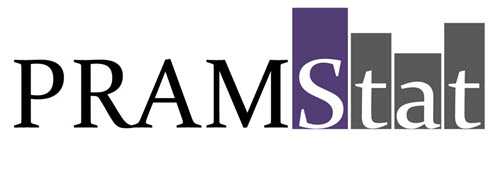PRAMStat: About CDC’s PRAMS Online Data Platform
PRAMStat is an online data platform developed to provide public access to over 250 maternal and child health indicators from the Pregnancy Risk Assessment Monitoring System (PRAMS). Users can view and interact with PRAMS visualizations, such as maps and charts, and save visualizations for use in creating fact sheets and presentations. Use PRAMStat to explore PRAMS data from 2000 through 2011 from a single state or select a topic and compare data across states.
Data from 2000 through 2006 are provided for PRAMS state and year combinations that achieved at least a 70% response rate; data from 2007 through 2011 are provided for PRAMS state and year combinations that achieve at least a 65% response rate. As additional data years are weighted, they will be added to the system. All-state aggregate estimates of each indicator are available within PRAMStat for comparison purposes. The all-state aggregate includes all PRAMS states that met the response rate threshold (65% or 70%, depending on year).
PRAMStat indexes over 250 variables by class and topic for selection as the outcome variable in requested analyses. In addition, there are 17 control variables for breakout or stratification. State-specific results can be generated for a single year or across all available years to examine trends in the data. Once a request has run, results may be viewed in map, chart, or table format. Users can export the resulting map, chart, or table for use in reports and presentations. The PRAMS Web site provides access to general information on the program, participating states, questionnaires, and other publications and analyses.
Preconception Health Indicators in PRAMStat
NEW in PRAMStat
- Addition of all-state aggregate estimates.
- Ability to generate maps. The maps group states by quartiles for the selected indicator.
- Flu indicators
- Choose the 2009-2010 flu season as the year of analysis.
- Flu questions were only included during flu season months that cross calendar years.
- Preconception health indicators where PRAMS is the primary data source.
- Denoted by (*PCH) in label.
- Detailed documentation on preconception health indicators available in PRAMStat.
- Page last reviewed: February 10, 2015
- Page last updated: January 28, 2016
- Content source:


 ShareCompartir
ShareCompartir
